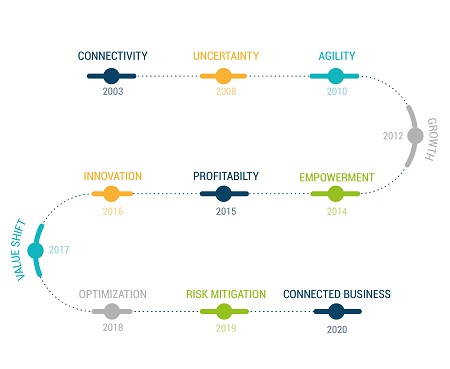It is clear from Techaisle SMB and Midmarket buyers journey research that both ITDMs (IT decision makers) and BDMs (Business decision makers) play important roles in the (formal and shadow) acquisition of IT products and services. However, Techaisle research has also found that the distinctions between these roles are not evenly applicable across all types of IT-enabled solutions: in some areas, the business will look to IT for leadership, and in others, it will take direction from BDMs.
The positioning of these solutions is important to technology vendor sales and marketing strategies. Solutions in the “IT led” category need to have strong IT-focused positioning, with detailed information on product attributes; this material should be supported with a second layer of collateral containing information on the business case for the solutions, and aimed at BDMs. Solutions in the “BDM led” category require very different positioning: here, vendors need to make a strong case for the business benefits and relevance of the solution and orient these messages towards BDMs, supporting this campaign with accompanying technical information designed to provide clear deployment and integration guidance to ITDMs. The “IT/BDM collaborative” category is the trickiest to address. It requires deep information on business benefits and the process steps required to capture those benefits targeted at BDMs, and deep information on how to assemble, deploy, integrate and support/optimize these solutions targeted at ITDMs – and an understanding of how to position and convey the messages to each audience.
Virtualization is IT-led
In micro businesses, BDMs are reported to provide virtualization solution adoption leadership – but in all other employee-size segments, ITDMs are seen as driving adoption. Within mid-sized business, ITDMs are 2.5 times more likely than BDMs to be leading virtualization adoption, and ITDMs are viewed as having complete responsibility for virtualization solutions in nearly one-third of companies with 100-999 employees.
Managed services is IT-led
Survey responses tell a remarkably consistent story about managed services: accounts in each of the employee-size segments ascribe a rating of 36-42 (out of 100) to ITDMs as of managed services initiatives. This is a natural connection; in general, SMBs adopt managed services to reduce IT labor costs, to free up scarce IT resources to take on other tasks, and/or to provide management of complex technologies, such as services. However, BDMs may also have an interest in managed services, as they often provide access to cloud-based capabilities matched with human IT resources.
IaaS is ITDM/BDM collaborative-led
IaaS is deployed in two very different ways: as a cost-effective means of supporting IT infrastructure, generally sourced by IT, and as a means of supporting the specific (and sometimes, short-term) requirements of a business-led project, often paid for by the business team. The data suggests that the IT use case is more prevalent, and indeed, anecdotal evidence (such as the fact that market leader AWS has a very strong presence within the IT developer community) would tend to support this view. However, there is clearly supplier opportunity in the ‘BDM IaaS’ category as well.
SaaS is ITDM/BDM collaborative-led
SaaS is another category that can affect ITDMs and BDMs, as part of a collaborative initiative or individually. SaaS applications themselves can be seen as belonging to many different categories, including SaaS applications that support IT management functions (such as software development, migration/version management, and IT asset management applications) and applications CRM, ERP, HR/talent management, customer service applications, social marketing, etc.) that are designed to be used by specific non-IT users and departments. Use of multiple SaaS applications adds additional complexity, with the need to integrate and secure multiple data streams; this is likely one reason why IT’s influence over SaaS is greater within mid-market firms (which have a greater variety of users and applications) than within small businesses. Data illustrates, these issues eventually define a category in which BDMs are generally seen as having the primary influence over adoption, but where relatively few accounts (no more than 24% in any employee-size segment, and generally 9%-16%) report that BDMs have sole authority over SaaS initiatives.













